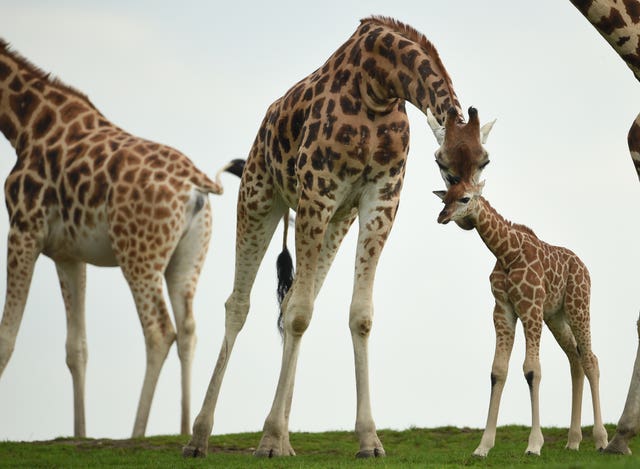
Conservation efforts have helped mountain gorillas take a step back from the brink of extinction, the International Union for Conservation of Nature (IUCN) has said.
The subspecies of gorilla, which is found in two areas in the Democratic Republic of Congo, Rwanda and Uganda, has moved from critically endangered to endangered on the IUCN Red List of Threatened Species.
Anti-poaching patrols, removal of snares and work with communities who live around the protected areas where mountain gorillas are found have helped boost numbers from an estimated 680 in 2008 to more than 1,000 in 2018.

Dr Liz Williamson of the IUCN primate specialist group said it was “fantastic news” the mountain gorillas are increasing in number, but warned they were still endangered and conservation action must continue.
Fauna and Flora International (FFI), which established the International Gorilla Conservation Programme in 1991 to protect mountain gorillas, has called for conservation efforts to be enhanced, not weakened, following the news.
Matt Walpole, from FFI said: “Mountain gorillas remain threatened with extinction despite significant conservation efforts over recent decades, and we have to make sure we build on these achievements and not allow this success to become an excuse for weakening protections.”
Threats to the apes including irresponsible development, disease and climate change remain, and while gorilla tourism has played an important part in boosting protection it needs the right support and safeguards to continue to do so, he said.
“Ensuring the benefits of tourism are properly directed to mountain gorillas and local communities will remain essential to avoid undoing years of achievement.”

There is also good news for the fin whale, which has seen its status improve from endangered to the less severe category of “vulnerable” to extinction in the latest update of the Red List.
Its population has roughly doubled globally since the 1970s in the wake of international bans on commercial whaling in the north Pacific and the southern hemisphere since 1976 and reductions in catches in the north Atlantic since 1990, the IUCN said.
The western sub-population of the grey whale has also improved, moving from critically endangered to endangered.
And Rothschild’s giraffe, now only found in small areas in Kenya and Uganda, has seen its status improve from vulnerable to near threatened as a ban on hunting, reintroductions and other conservation efforts helped boost populations.
But the update to the Red List reveals that overfishing is causing declines in important fish species in parts of the developing world, with 13% of the world’s grouper species and 9% of Lake Malawi fish now threatened with extinction.
Illegal logging is threatening the survival of the Vene tree, a globally important timber tree which is found in west and central Africa and which is now listed as endangered as booming demand for its wood drives felling.

The Titan arum from Sumatra, nicknamed the corpse flower for its stench, has been assessed for the first time and is listed as endangered.
It has seen an estimated population decline of 50% in 150 years due to logging and conversion of forest to palm oil plantations.
And the largest North American tortoise species, the Bolson tortoise, found in Mexico’s Bolson de Mapimi basin, has gone from vulnerable to critically endangered due to being eaten by local people and a loss of habitat.
In total, 96,951 species are assessed on the Red List, and 26,840 are considered to be threatened with extinction, being placed in the most at-risk categories of critically endangered, endangered, or vulnerable.
Inger Andersen, IUCN director general, said: “Today’s update to the IUCN Red List illustrates the power of conservation action, with the recoveries we are seeing of the Fin Whale and the Mountain Gorilla.

“These conservation successes are proof that the ambitious, collaborative efforts of governments, business and civil society could turn back the tide of species loss.
“Unfortunately, the latest update also underlines how threats to biodiversity continue to undermine some of society’s most important goals, including food security.
“We urgently need to see effective conservation action strengthened and sustained.”


Comments: Our rules
We want our comments to be a lively and valuable part of our community - a place where readers can debate and engage with the most important local issues. The ability to comment on our stories is a privilege, not a right, however, and that privilege may be withdrawn if it is abused or misused.
Please report any comments that break our rules.
Read the rules here